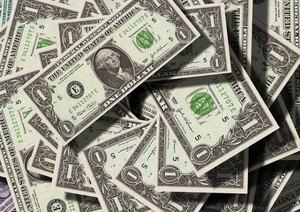
[이코노믹리뷰=박창민 기자] The won-dollar exchange rate ended slightly lower. Although some of the surges were returned the day before, there are observations that the exchange rate is likely to rise in the short term.
On the 29th, the won-dollar exchange rate in the Seoul foreign exchange market closed at 1118.8 won, down 0.8 won from the previous trading day (1119.6 won).
The won-dollar exchange rate started at 1114.0 won, down 5.6 won from the previous day’s closing price. Since then, the strength of the dollar and the KOSPI index turned downward, and soon the exchange rate rose and narrowed the decline.
The dollar index, which represents the value of the dollar against the currencies of six major countries, fell from 90.64 to 90.42. The New York stock market rebounded as overheated stocks represented by’Game Stop’ and the backlash against the plunge the previous day grew stronger. On the 28th (local time) on the New York Stock Exchange (NTSE), the Dow Jones 30 Industrial Average ended at 3,603.36, up 300.19p (0.99%) from the battlefield. The Standard & Poor’s (S&P) 500 index rose 36.61p (0.98%) from the battlefield to 3787.38, while the technology stock-oriented NASDAQ index ended at 13,3337.16, up 66.56p (0.50%).
However, the New York Stock Market declined in the futures market. As of 17:38, the Dow Jones fell 1.02%, S%P500 1.09%, and Nasdaq 100 1.42%.
In addition, there are observations that it is necessary to pay attention to the movement of the People’s Bank, which has absorbed liquidity for the fourth consecutive day in the won-dollar exchange rate.
Seo Sang-young, a researcher at Kiwoom Securities, said, “Contrary to market concerns, the possibility of taking measures to reduce speculative demand taking into account the high level of leverage is large. Contrary to market concerns, we believe it is not austerity.” Considering the Korean stock market, if there is no liquidity recovery from the People’s Bank, it could leave behind the previous day’s decline and some retracement.”
In terms of the exchange rate outlook, observations of a trending decline are still dominant, but the prospect of an increase in the short term is also raised.
Shinhan Financial Investment Researcher Kim Chan-hee said, “The first quarter is traditionally a seasonal export season after the shopping season in developed countries, and there are concerns about delays in the recovery of domestic demand due to uncertainty in vaccines, so the exchange rate is expected to flow upward in the short term.”
Researcher Ahn Young-jin of SK Securities said, “Considering that the rebellion of individual investors (from the United States) and the short-term liquidity maturity of the People’s Bank remain, the noise surrounding the risk aversion sentiment will need time to be digested.” I think it’s a watershed for a turnaround. In the short term, it is an area where upward pressure can be applied.”
